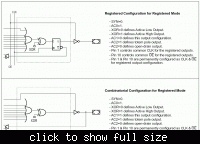herwis
Newbie level 5

Hi everyone ,
I need to implement up-down counter with synchronous clear, enable and open-drain output by using 16V8 chip. any help is appreciated because im new in this field.
thanks
I need to implement up-down counter with synchronous clear, enable and open-drain output by using 16V8 chip. any help is appreciated because im new in this field.
thanks





